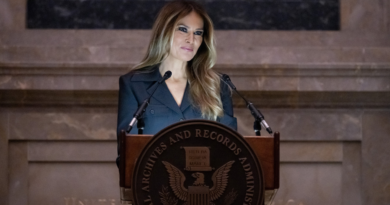US economy grew at weak 1.1% rate in Q1 in sign of slowdown
The housing market, which is especially vulnerable to higher loan rates, has been battered. Consumer spending, which fuels roughly 70% of the entire economy, has softened. And many banks have tightened their lending standards since the failure last month of two major U.S. banks, making it even harder to borrow to buy a house or a car or to expand a business.
Many economists say the cumulative impact of the Fed’s rate hikes has yet to be fully felt. Yet the central bank’s policymakers are aiming for a so-called soft landing: Cooling growth enough to curb inflation yet not so much as to send the world’s largest economy tumbling into a recession.
There is widespread skepticism that the Fed will succeed. An economic model used by the Conference Board, a business research group, puts the probability of a U.S. recession over the next year at 99%.
The Conference Board’s recession-probability gauge had hung around zero from September 2020, as the economy rebounded explosively from the COVID-19 recession, until March 2022, when the Fed started raising rates to fight inflation.
Consumers, whose spending accounts for roughly 70% of U.S. economic output, seem to be starting to feel the chill. Retail sales had enjoyed a strong start in January, aided by warmer-than-expected weather and bigger Social Security checks. But in February and again in March, retail sales tumbled.
The worst fears of a 2008-style financial crisis have eased over the past month. But lingering credit cutbacks, which were mentioned in the Fed’s survey this month of regional economies, is likely to hobble growth.
Political risks are growing, too. Congressional Republicans are threatening to let the federal government default on its debts, by refusing to raise the statutory limit on what it can borrow, if Democrats and President Joe Biden fail to agree to spending restrictions and cuts. A first-ever default on the federal debt would shatter the market for U.S. Treasurys — the world’s biggest — and possibly cause a global financial crisis.
The global backdrop is also looking bleaker. The International Monetary Fund this month downgraded its forecast for worldwide economic growth, citing rising interest rates around the world, financial uncertainty and chronic inflation. American exporters could suffer as a consequence.
Still, the U.S. economy has surprised before. Recession fears rose early last year after GDP had shrunk for two straight quarters. But the economy roared back in the second half of 2022, powered by surprisingly sturdy consumer spending.
A strong job market has given Americans the confidence and financial wherewithal to keep shopping: 2021 and 2022 were the two best years for job creation on record. And hiring has remained strong so far this year, though it has decelerated from January to February and then to March.
The jobs report for April, which the government will issue on May 5, is expected to show that employers added a decent but still-lower total of 185,000 jobs this month, according to a survey of forecasters by FactSet.




